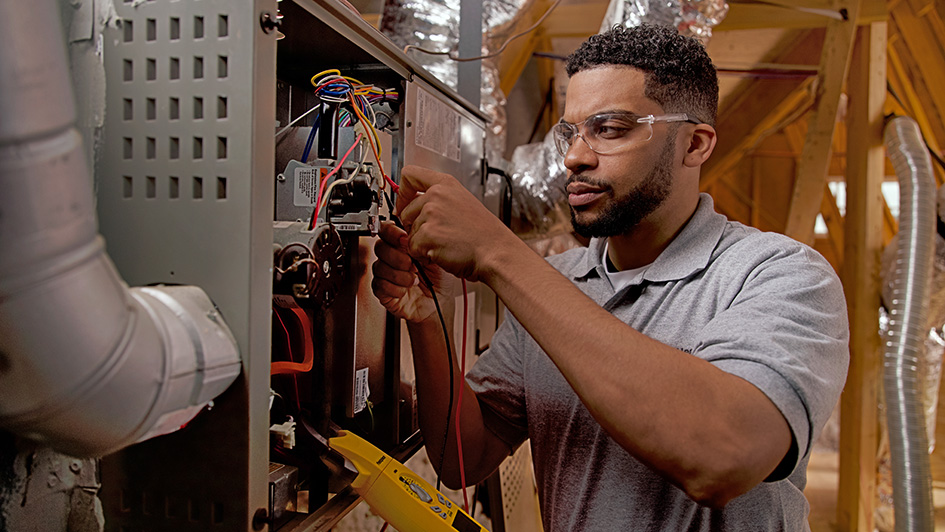
A furnace is often a background player in your home, keeping you warm in the cold winter months. It regularly doesn’t get noticed until a malfunction appears.
One cause could be that your furnace has a cracked heat exchanger. It’s a potentially dangerous issue, so it’s important to learn the signs of a cracked heat exchanger and what to do if you suspect that might be the problem.
What Is a Heat Exchanger in a Furnace?
A heat exchanger transfers heat from the combustion chamber in your furnace to the air that moves inside the ventilation. It usually handles this with coils or tubes that heat the air while functioning as a barrier to keep gas formed in the combustion chamber, called flue gasses, from escaping out into your home.
Is a Cracked Heat Exchanger Dangerous?
Given its key role, it’s no surprise that a damaged heat exchanger can pose a risk. A crack in the heat exchanger can allow dangerous gasses – including carbon monoxide, which can be lethal – to circulate throughout your home.
For obvious reasons, don't ever turn on your heating if you think there's a crack in the heat exchanger, as letting it run could make the entire family sick. Reach out to an HVAC professional right away if you believe your heating has a cracked heat exchanger that should be repaired.
Four Warning Signs of a Cracked Heat Exchanger:
- Furnace turns off: Cracks in the heat exchanger could cause your furnace to switch off.
- Unusual Smells: If the air leaving your furnace has an intense chemical scent, it might be evidence gas is seeping through cracks in your heat exchanger. These byproducts, which may smell like formaldehyde, are a significant warning sign.
- Carbon monoxide alarm initiates or you feel poisoning symptoms: If a cracked heat exchanger is emitting carbon monoxide inside your home, your carbon monoxide alarm may go off or household members may start experiencing signs of carbon monoxide poisoning. Side effects include headaches, dizziness, weakness, nausea, vomiting or feeling tired. If your alarm goes off or you feel unwell, exit the home as soon as you can and then call for help.
- Soot: If you notice black sooty accumulating on the exterior of your furnace, it’s another sign something might be seriously wrong.
What You Can Do if Your Furnace Heat Exchanger is Cracked
If you worry your furnace has a cracked heat exchanger, contact a pro well versed in furnace installation Jefferson right away so they can inspect your system and, if necessary, perform a furnace heat exchanger replacement. Costs should fluctuate depending on the situation, but estimates often hover around $1,000 to $3,000.
Fortunately, the good news is that heat exchangers are regularly protected by the warranty. You’ll want to confirm the warranty paperwork on your furnace, since while the warranty might not cover the entire cost of repairs, it still may significantly reduce your bill.
How to Avoid a Cracked Heat Exchanger in Your Home
One of the best ways to minimize the risk of problems in your furnace overall is via regular furnace maintenance. Furnaces offer the most benefits when they operate efficiently. Hiring a certified professional to examine your furnace for old parts, clogged filters and other common problems can help you avoid getting a big bill later on.
It’s also helpful to inspect your furnace filters every few months – it’s recommended some filters be changed every 90 days or sooner if they are dirty or grimy. While the filters are not part of the heat exchanger itself, the strain of pulling air through a clogged filter makes the entire furnace work longer to complete its job. And the harder your furnace needs to run, the more strain pieces like the heat exchanger will sustain.
